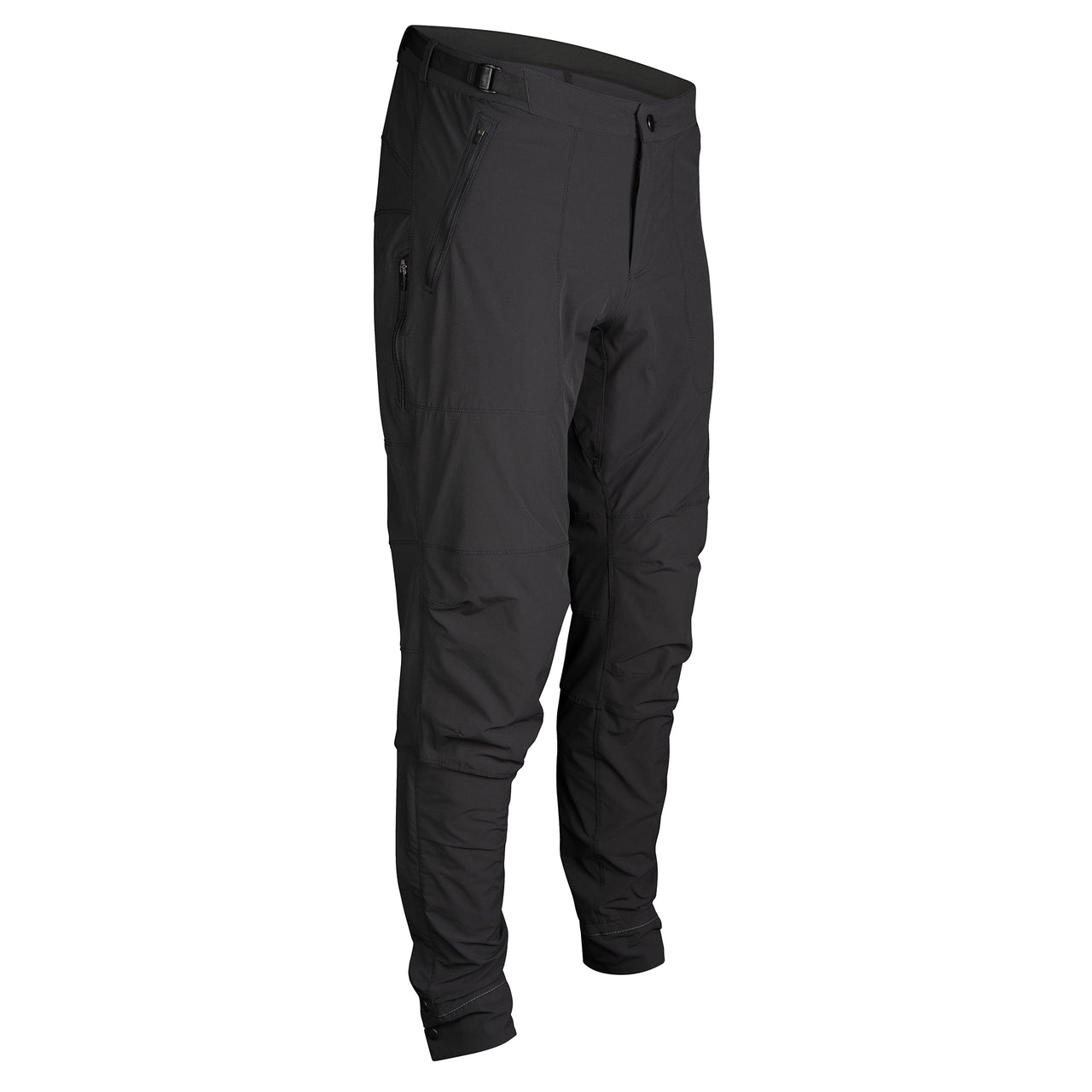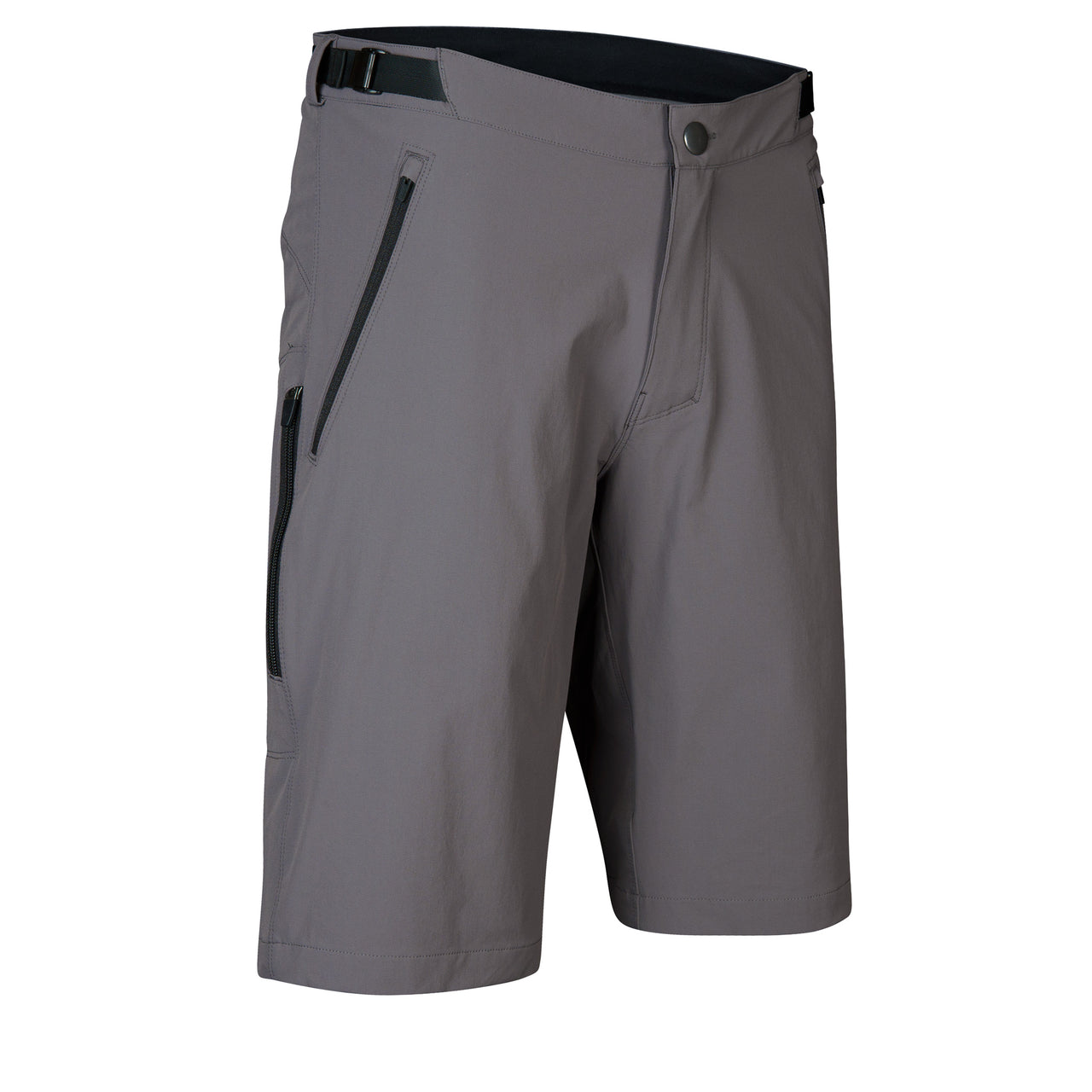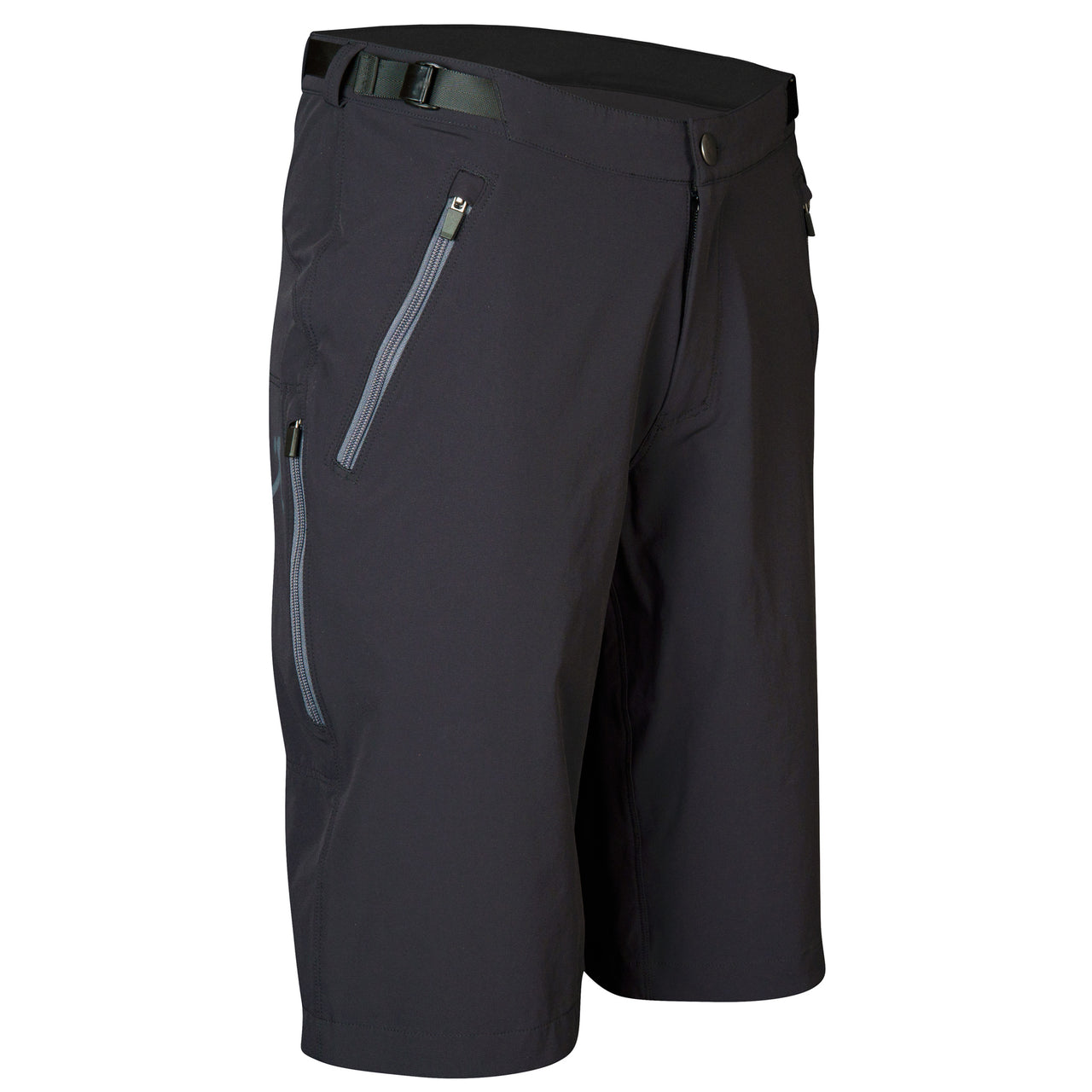How To Re-Apply DWR
The Durable Water Repellent (DWR) finish on technical apparel, like our MTN Shorts beads water, keeps fabrics from feeling clammy, and helps fabrics dry faster.
DWR wears out over time and needs to be re-activated with heat or reapplied with a spray. Mountain bike shorts take a beating from dirt and saddle abrasion, so the DWR needs to be of higher quality and it needs to be refreshed more often than on ski gear.
How to Re-Apply DWR
We recommend Revive-X from Gear Aid. It's the same PRC-free DWR that we use at the factory on our Stoke Extender Pants. We do not recommend wax-based DWR such as Nikwax, it doesn't last very long, especially on MTB shorts.
Whatever brand you use, we recommend spray-on. Wash-in DWR is wasteful as most of it goes down the drain.
These instructions are for Abit Gear outerwear, but apply for most technical fabrics.
Step 1: Test. Spray a little water on the seat area of your shorts. If it beads up nicely, you're good to go. If it doesn't bead up, then you need to reapply.
Step 2: Wash. If you have a detergent designed for technical apparel, follow the directions, and wash on warm cycle.
If you just have normal laundry detergent, you can still make it work. Wash on warm, in the normal manner. Then put your clothes back in the washer for another quick-wash cycle on warm, but WITHOUT detergent. Normal detergent tends to leave a residue, and you need to get this all out.
Step 3: Treat. Hang your clothes, and spray on the DWR treatment. They'll drip a bit, so have a tarp or piece of cardboard under them. Your shorts can either be damp or dry if using Revive-X. We prefer dry as it's easier to see where they need DWR applied. If the spray beads up, not much is needed. In areas where the spray wets out the fabric (likely the seat area), it needs a full coating.
Wait 5 minutes for the treatment to soak in, then reapply in the high wear areas where it didn't bead up nicely. Wait at least 5 more minutes for good absorption.
Step 4: Dry. Revive-X can be air dried for 48 hours or put in the dryer on medium cycle to set it. We prefer using a dryer.
Step 5: Ride hard! Freshened DWR will repel splashes and help your shorts dry faster.
Notes on Washing and Fabric Care
Our care instructions recommend machine washing cold and tumble drying low, or hang drying. This is due to the fact that all stretch materials break down and lose their recovery when exposed to excessive heat.
You can wash on warm from time to time for a deep clean with no damage to the fabric. Drying on medium or higher is what really beats up technical fabrics. That said, you can throw your shorts, pants and jackets in the dryer on medium a couple times a year to re-activate the DWR finish if it's still beading up a little bit but needs a bump.
Don't use bleach, and never, ever, under any circumstances use fabric softener or dryer sheets. It'll make you stink and ruins the performance of your technical apparel.
Types of DWR: Sustainability & Performance
This is an update for 2025. We have switched to a C0 PFC-free DWR treatment on our Stoke Extender Pants. The environmental problems with "forever chemicals", including the older types of C6 DWR with fluorocarbons, have become clear and well understood.
The PFC-free DWR we are using on new products has excellent waterproofing performance when new, outperforming C6. The PFC-free DWR treatments do not last as long under tough conditions as C6, so they need to be reapplied more frequently.





